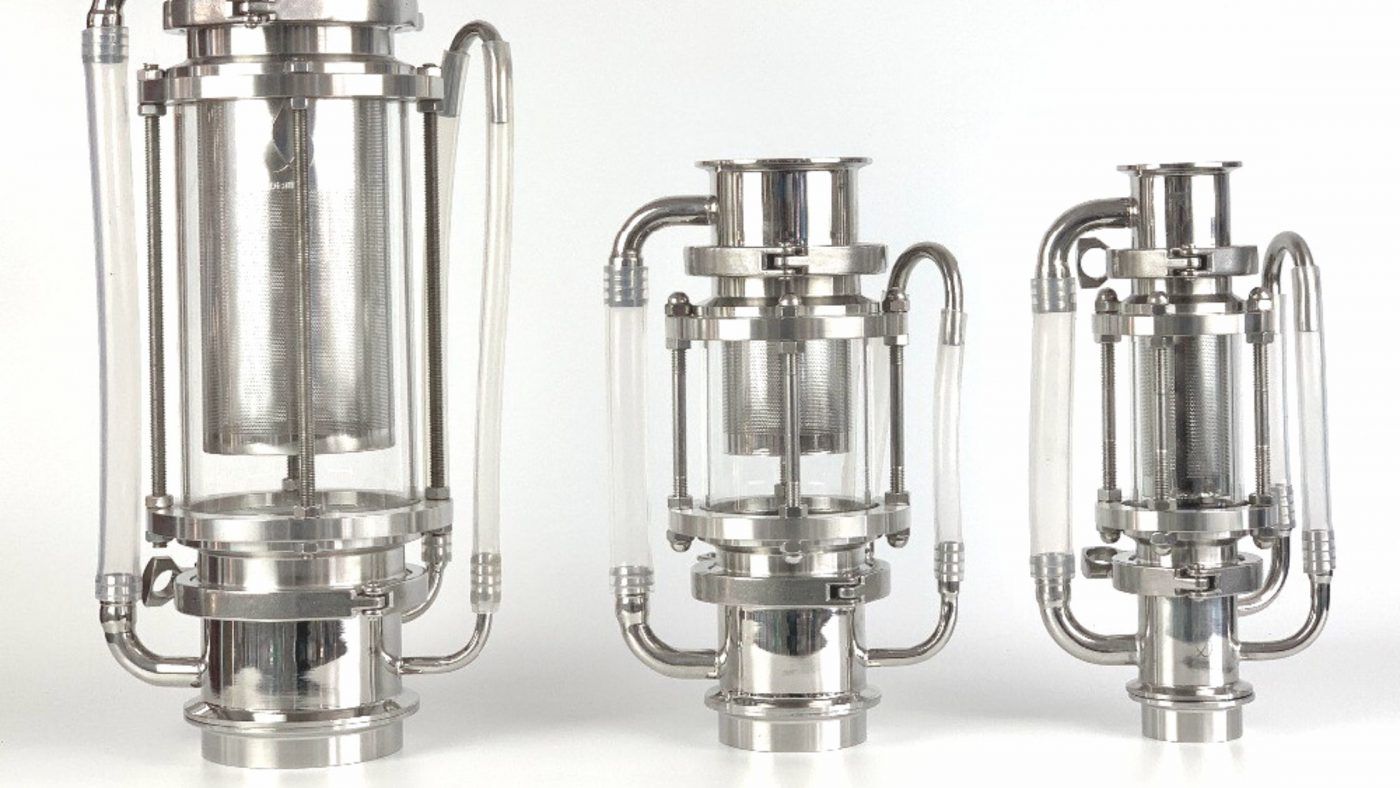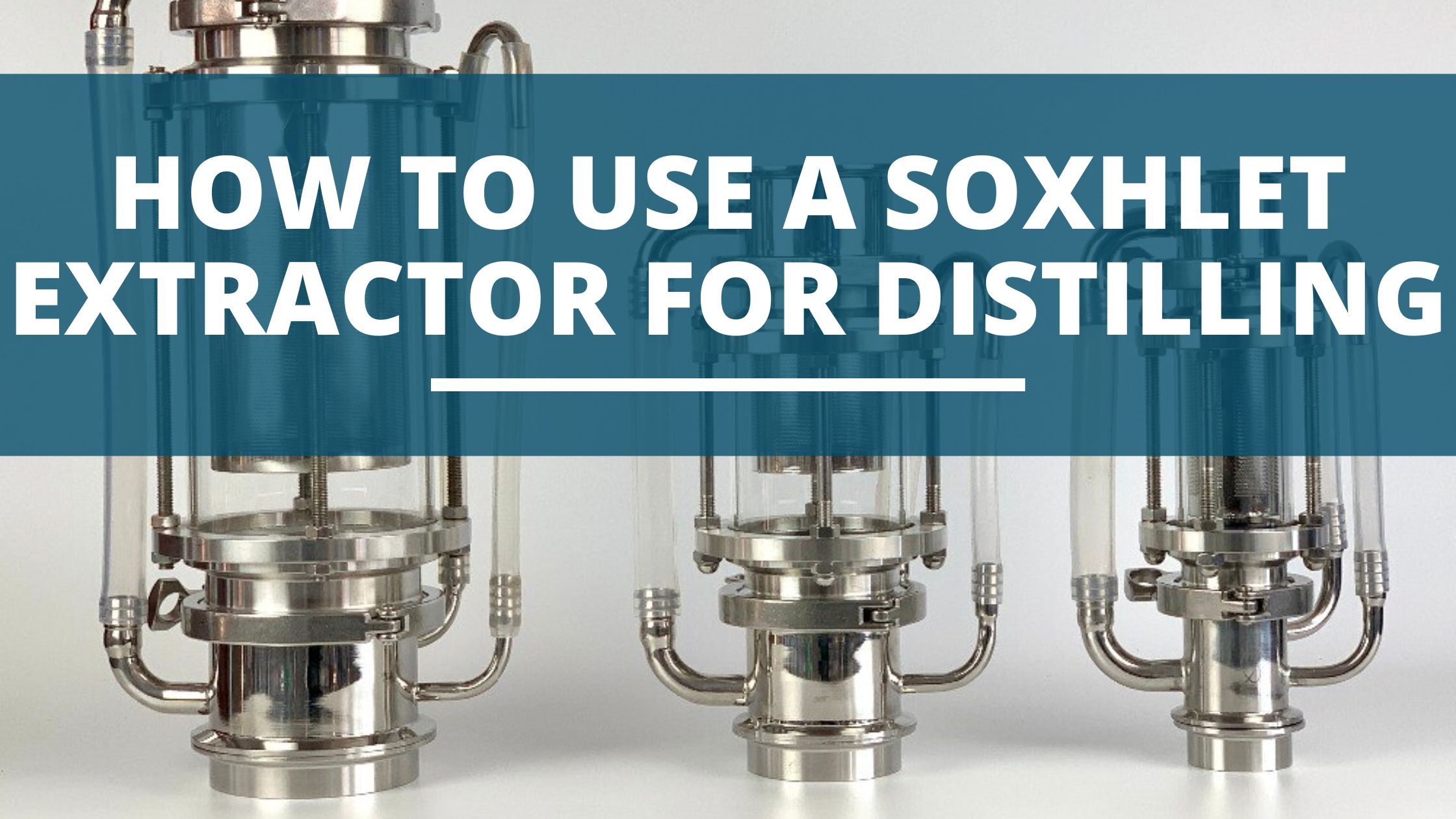Uncategorized
Soxhlet Extractor For Distilling (+ How To Use One)
There are a plethora of devices and techniques you can use to create a superbly flavored drink. These include a gin basket, maceration, and infusion.
But one technique that isn’t always talked about is the use of a soxhlet extractor.
The device has been used by chemists since its discovery in 1879. It’s renowned because it makes it possible to extract essences that are above the normal saturation point of the solvent.
But, it’s not just limited to use in a chemistry laboratory. Distillers have found it to be an excellent tool to make concentrated extractions of ingredients to be mixed into gin or liqueurs.
In the distilling world, a soxhlet extractor is used to draw out and concentrate the active properties of a botanical – making it ideal for essence production. You put your desired botanical, such as orange peel or cinnamon into the thimble (extractor head), apply heat to the boiling flask, and let the reflux action do the work. After the extraction is complete, turn off the heat source and let the device cool down before decanting the product from the boiler and extractor vessel
In this article, we’ll share how you can use the device to improve and innovate your distilling products.
Table of Contents
What Is A Soxhlet Extractor, And What Does It Do?
A soxhlet extractor is equipment used to extract substances of a solid (typically plants). It’s often used to remove every bit of oil from a product. It achieves this through its continuous reflux action. Its uses include:
- Biofuel production.
- Essential oil production.
- Biochemical extraction in labs.
- To analyze environmental samples like marine species and soil.
- Used by distillers when making essences and concentrates.
The ingredient is placed in a basket, which is then placed in the main chamber of the extractor. The solvent is heated in a flask (usually the boiler of our still), causing it to vaporize and travel through a condenser. The condensed solvent drips into the thimble, dissolving the compound of interest and allowing for efficient extraction over a period of several hours. The extract is collected in a separate flask for further analysis or purification.
The key tenat of soxhlet extractor is it makes it possible to extract essences that are above the normal saturation point of the solvent.

How To Pronounce “Soxhlet Extractor”
Yeah, we struggled with this too. Here’s how to pronounce soxhlet and extractor.
- Soxhlet – Sox•let
- Extractor – Uhk•strak•tuh
Or, check out this Youtube video so you can put stress on the correct syllables.
And check this video for how to pronounce extractor.
Design of a Soxhlet Extractor
A soxhlet is remarkably simple in its design – made of four components. Despite its simplicity, it’s extremely effective in producing the desired results. The components include:
- A boiling flask: similar to the boiler of your still, this portion holds the solvent you’ll be using.
- Reflux condenser: to cool the vapors.
The percolator consists of:
- A thimble: to hold the botanicals you’ll be using.
- A siphon: to transfer condensed liquid back into the flask.
How Does A Soxhlet Extractor Work?
The soxhlet works very similarly to a reflux still. The main difference is it’ll continue the reflux cycle until all the desired oils are extracted. Here’s an explanation of how the device achieves this.
- A solvent (ethanol) is added to the boiling flask, and heat is applied.
- The vapors of the solvent move through the botanicals in the chamber. As they do so, they extract the flavor (and color) of the botanicals.
- The vapors go up to the reflux condenser, condense and drop down into the thimble.
- When the percolator fills with the liquid, the liquid gets siphoned into the boiler.
- Now in the boiler, the solvent is redistilled, leaving behind the flavor compounds in the boiler. Because this new ethanol isn’t burdened by any dissolved compounds it’s able to effectively extract what’s remaining in the botanical basket.
- The process repeats until there’s nothing left to extract.
Let’s face it, every distilling device has its advantages and disadvantages. It’s up to you to decide whether or not the said device is suitable for your needs. Here are the pros and cons of soxhlet extraction.

Advantages of Soxhlet Extraction
- Effectively extracts active properties of a plant.
- It comes in various sizes to accommodate the different amounts of botanicals you want to extract.
- You can adjust the temperature of the heat source, therefore controlling the reflux rate.
- It’s convenient. You can apply heat, set a timer, and let the device do the job of extracting.
- Ideal when making a flavored drink in a short period.
Disadvantages of Soxhlet Extraction
- The product liquid will be colored, rather than clear like a normal distillate
- They are expensive, and often need to be custom-built for your distillery.
- The price isn’t beginner-friendly, especially if you intend to extract large amounts of botanicals.
What Can You Put In A Soxhlet Extractor?
The beauty of a soxhlet extractor is that you’re not limited to what botanicals you can add to it.
You can put the following in the equipment.
- Plants
- Seeds
- Oak chips
- Spices
- Herbs
- Grains
As long as you’re using any product with soluble and insoluble substances, the device is your oyster.
How To Use A Soxhlet Extractor
To get an idea of how to use the device, here’s an example recipe you can try.
We’re going to make and orange essence using the extractor head. This is fun because we can use the essence to boost the citrus notes in a gin, or to make our own orange liqure like Cointreau!
Example Recipe: Making Orange Essence
You’ll need:
- 20g orange peel.
- 1300ml 96% ABV neutral alcohol (you can use Everclear)
- 1500ml filtered water to dilute.
Method:
- Assemble the extractor as instructed in the instruction manual.
- Dilute your alcohol to 70% ABV (140 proof).
- Pour the alcohol into the boiler.
- Put the herbs in the thimble.
- Attach the percolator, thimble, and condenser to the boiler. Secure in place with clamps.
- Turn on the heat source. Ensure the heat is at 176 °F (80°C).
- Allow the soxhlet to run until extraction is complete.
- Let the boiler cool down.
- Transfer the liquid into a clean glass jar.
- Dilute it to your desired ABV.
- Transfer the drink into bottles.
Soxhlet Extractor – Frequently Asked Questions
Q. Soxhlet extractor vs. gin basket: what’s the difference?
A gin basket is used to hold botanicals so the vapors in a still can extract flavors as they move to the condenser.
It’s often placed on the neck of a boiler or on the side of a column. The final product is typically clear, light, and smooth.
A soxhlet extractor draws flavors through continual reflux. Doing so increases the essential oil content of the alcohol, producing a robustly flavored drink.
Because of its continuous extraction, it also draws out the color of the botanicals. It works best for essence and extract production.
Q. Can you make gin with a Soxhlet Extractor?
You can make gin with a soxhlet extractor. If you’re not concerned about the color of the drink and are chasing flavor, then it’ll be a good technique to use.
Conclusion
Soxhlet extractors haven’t lost their place in the modern world. Even more so, in the distilling world.
They can be viewed as the home distiller’s next best friend because they effectively create concentrates and essences.
Having your favorite concentrate at hand ensures you continuously produce a flavorsome drink.
It’s also very convenient to use.
You simply turn on the heat source, set your timer, and let the device extract enough substances as you desire – without having to continuously check on it.
Now that you know how to use a soxhlet, why not get started with your extracts?









